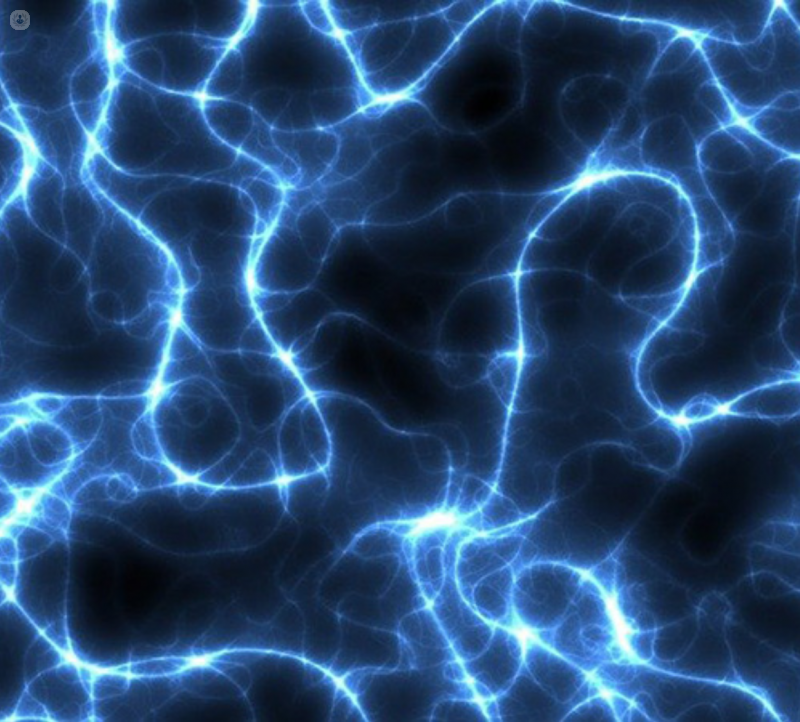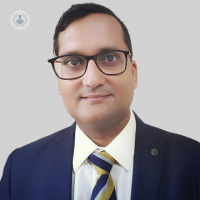What is neuromodulation therapy and how does it work?
Written by:Neuromodulation therapy can be life-changing. It has the power to treat a wide variety of conditions and diseases, ranging from headaches, spinal damage to urinary incontinence - and the list is growing.
Dr Shankar Ramaswamy, a top consultant in anaesthesia, pain management and neuromodulation, explains how it works, which conditions it can treat and the various therapies available.

What is neuromodulation therapy?
Neuromodulation therapy alters the pain signals as they travel to the brain. Through the use of technology, it applies electrical or pharmaceutical stimulation directly to the nerves.
The therapy can be used to treat a variety of different conditions - with chronic pain being the more prominent one.
Other conditions include:
- Urinary or bowel incontinence
- Complex regional pain syndrome
- Neurological conditions such as Parkinson's
- Angina
- Tremors
- Epilepsy
- Pelvic floor disorders
- Spasticity
- Spinal injury
- Visual or auditory problems
- Specific psychiatric disorders
Neuromodulation therapy can be applied to different areas of the body. For example, if you are suffering from back pain or urinary incontinence, it could be applied to the spine. Similarly, if you suffer from Parkinson’s, it would be applied to the brain.
How does neuromodulation therapy work?
Neuromodulation therapy works through the use of electricity or pharmaceutical (chemical) agents.
- Electricity
This involves the use of a device connected to a power source that delivers a low voltage electrical current in a very focused way. It acts by actively stimulating the nerves and producing a special therapeutic response.
Traditional electrical stimulation involved the use of a buzzing or paresthesia sensation, which acted by masking the pain sensation. However, more recently there have been considerable advances in technology, which allows the stimulation to now be delivered without the associated buzzing feeling, also called paresthesia-free stimulation. Examples of such stimulation include high frequency (HF10), burst and sub-threshold stimulation. These advances in technologies have been successful in carefully selected patients to achieve a ‘cure’ in chronic pain, which was previously considered unthinkable.
Another novel neuromodulation therapy has looked at stimulating the multifidus muscle and strengthening the core muscles in patients with refractory mechanical low back pain.
- Chemical
These drugs are delivered through special pump devices and work on specific areas of the nervous system.
Who is best suited for this treatment?
Neuromodulation therapy is best suited for patients with chronic pain, as well as those with spinal cord injuries, epilepsy, Parkinson’s and cardiovascular diseases.
Examples of the type of chronic pain may include:
- Failed back or neck surgery syndrome
- Post-amputation pain
- Post-operative pain
- Hernia pain
- Pain following a total knee replacement
- Complex regional pain syndrome
- Peripheral neuropathic pain
- Cancer pain - refractory cancer pain can be treated with intrathecal morphine pump devices
What are the different neuromodulation therapies available?
As mentioned previously, neuromodulation therapies use either electrical stimulation or targeted drug delivery. Some of the therapies that use electrical stimulation include:
- Spinal cord stimulation
- Dorsal root ganglion stimulation
- Peripheral nerve stimulation- these are available as implantable devices as well as disposable percutaneous devices for one-off or repeated applications
- Deep brain stimulation
- Vagus nerve stimulation
- Sacral nerve stimulation
- Gastric and colonic stimulation
- Transcranial magnetic stimulation
Therapies that use targeted drug delivery:
- Baclofen infusion
- Intrathecal drug delivery
- Intraventricular drug delivery
Is neuromodulation to treat pain still going ahead during the pandemic?
Yes, neuromodulation therapy is still going ahead during the pandemic. The therapy is being done in highly secure theatres in which there are strict protocols, making the areas COVID-free. This involves screening and throat swabs and the patient is expected to self-isolate in the days before coming into the hospital.
As this treatment doesn’t involve immuno-depressive medication, it is considered a very safe treatment to undergo during the coronavirus pandemic and will not increase your risk of COVID-19 complications.
If you are interested in this treatment and would like to speak to a specialist, visit Dr Shankar Ramaswamy’s Top Doctors profile to book an appointment with him.


